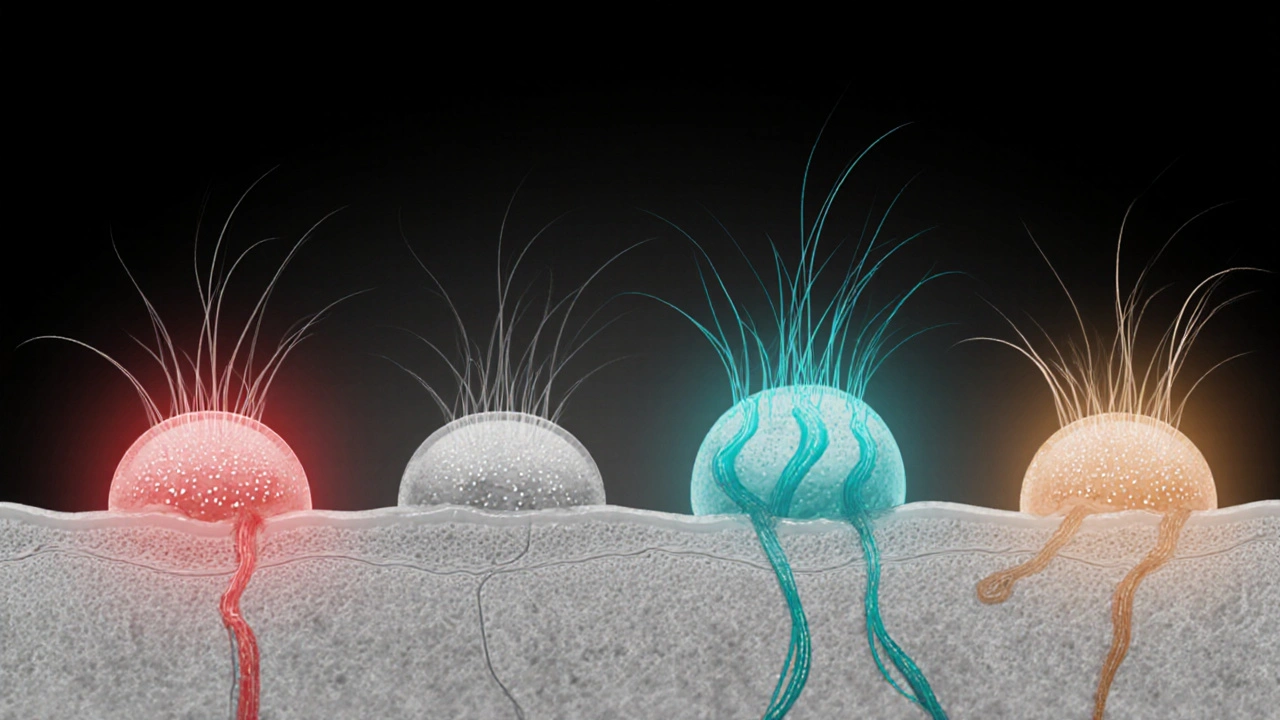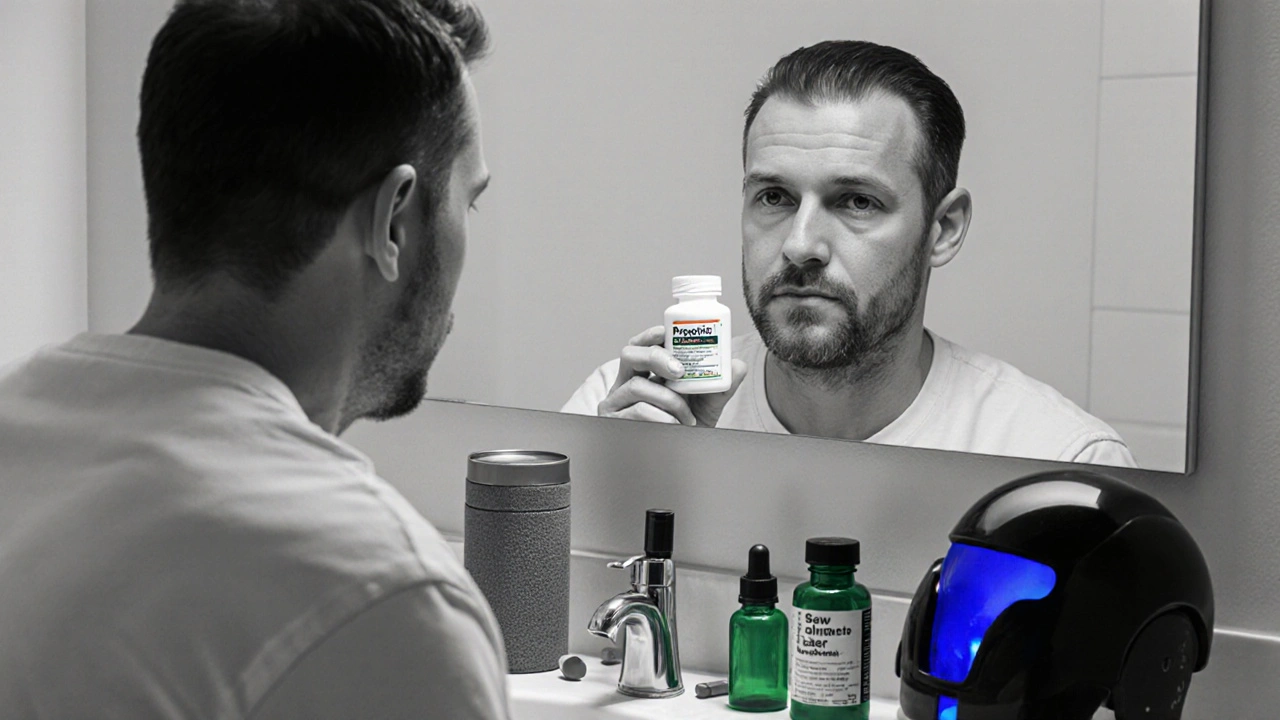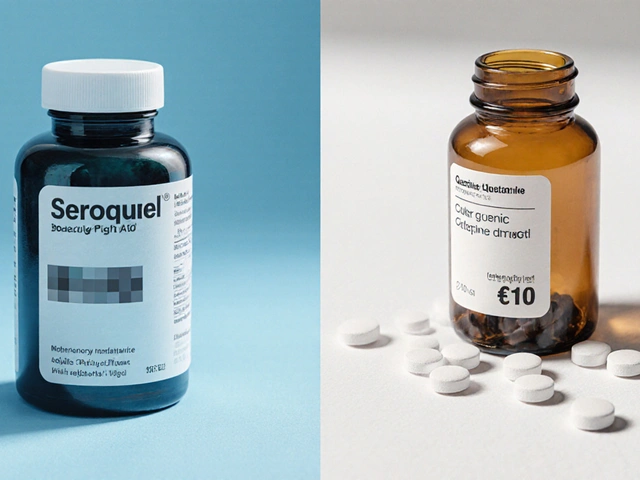Hair Loss Treatment Selector
Choose what matters most to you when selecting a hair loss treatment. Your priorities will help determine the best option for your situation.
Your Recommended Treatment
When it comes to tackling male‑pattern baldness, Propecia is the name that pops up most often. But the market is crowded with other options, from prescription pills to over‑the‑counter supplements. This guide walks you through the most common alternatives, compares their science, side‑effects, and price points, and helps you decide which route matches your goals.
Quick Takeaways
- Propecia (Finasteride) blocks DHT production and shows 80‑90% of users steady or regrown hair after 12 months.
- Minoxidil works on the scalp surface, is available without a prescription, and benefits about 60% of users.
- Dutasteride is a stronger DHT blocker but isn’t FDA‑approved for hair loss in the U.S.
- Natural extracts like Saw Palmetto and Pumpkin Seed Oil have modest evidence and virtually no serious side‑effects.
- Low‑Level Laser Therapy (LLLT) devices are a drug‑free, equipment‑based option with growing clinical support.
How Propecia (Finasteride) Works
Finasteride is a 5‑α‑reductase type II inhibitor. By reducing the conversion of testosterone to dihydrotestosterone (DHT), it shrinks hair follicles that have been miniaturized by DHT. The typical dose for hair loss is 1mg per day, taken orally.
Clinical trials consistently report that 80‑90% of men on a 12‑month regimen either stop further hair loss or see measurable regrowth. The drug is FDA‑approved for androgenic alopecia and has been on the market for over 20years.
Top Alternatives on the Market
Below is a snapshot of the most widely used alternatives, their mechanisms, and what the research says.
| Product | Mechanism | FDA Status | Typical Dose / Use | Reported Efficacy | Common Side‑Effects | Approx. Monthly Cost (US$) |
|---|---|---|---|---|---|---|
| Propecia (Finasteride) | 5‑α‑reductase II inhibition | Prescription‑only, FDA‑approved | 1mg oral daily | 80‑90% stabilize or regrow | Sexual dysfunction, mood changes | 30‑45 |
| Minoxidil | Vasodilator, prolongs anagen phase | OTC, FDA‑approved | 2% solution or foam, twice daily | ~60% see improvement | Scalp irritation, unwanted hair growth | 15‑25 |
| Dutasteride | 5‑α‑reductase I & II inhibition | Prescription (off‑label for hair loss) | 0.5mg oral daily | 90‑95% in small studies | Similar to finasteride, slightly higher libido impact | 35‑50 |
| Saw Palmetto | Natural 5‑α‑reductase inhibitor | Dietary supplement, no FDA claim | 320mg capsule, twice daily | ~30‑40% modest benefit | Generally none, occasional GI upset | 10‑20 |
| Pumpkin Seed Oil | Phyto‑sterols may block DHT | Supplement | 1tsp liquid or 2capsules daily | ~35% in limited trials | Rarely digestive discomfort | 12‑18 |
| Ketoconazole Shampoo | Anti‑fungal, reduces scalp DHT locally | OTC (2%); prescription (1%) | 2‑3 times weekly wash | ~25‑30% when combined with other therapy | Dryness, mild irritation | 8‑15 |
| Low‑Level Laser Therapy (LLLT) | Photobiomodulation stimulates follicle metabolism | Device class, FDA‑cleared for hair loss | 8‑15min daily using helmet or comb | ~45‑55% in meta‑analyses | Minimal, occasional eye strain | 200‑500 (one‑time purchase) |
| Biotin | Supports keratin production | Supplement, no FDA claim for hair loss | 5000‑10000µg daily | Limited evidence, benefits mainly if deficient | Rare, mild skin rash | 5‑12 |

Key Factors to Weigh When Choosing
Every hair‑loss regimen balances efficacy, safety, convenience, and cost. Below are the most common decision points.
- Desired Speed of Results: Prescription pills like Propecia often show changes within 3-6months, while natural extracts can take a year or more.
- Tolerance for Side‑Effects: Finasteride‑related sexual changes affect a small but vocal subset of users. If that risk feels too high, a topical approach (minoxidil or ketoconazole) or a device (LLLT) may be preferable.
- Long‑Term Commitment: Most treatments require ongoing use. Stopping Propecia typically leads to a reversal of gains within 12months. LLLT devices, once bought, can be used indefinitely without a refill.
- Budget Constraints: A monthly supply of finasteride costs about $30‑$45, whereas a quality laser comb is a one‑time $250‑$400 expense. Supplements sit in the low‑cost tier but may deliver modest results.
- Medical History: Men with a history of prostate cancer, liver disease, or hormonal disorders should discuss finasteride or dutasteride with a physician first.
Real‑World Scenarios
Scenario 1 - Early‑Stage Thinning, Low Budget
John, 28, notices a receding hairline at the temples. He wants a low‑cost, low‑risk solution. Starting with 5% minoxidil foam twice a day costs about $20 a month and has minimal systemic side‑effects. Adding a ketoconazole shampoo 2‑3 times a week can boost results without breaking the bank.
Scenario 2 - Rapid Progression, Willing to Pay
Mike, 42, has lost significant crown density over two years. He’s comfortable with a prescription and wants the strongest evidence. A daily 1mg finasteride combined with nightly minoxidil yields synergistic benefits-studies show up to 95% of users maintain or regain hair when both are used together.
Scenario 3 - Concerned About Sexual Side‑Effects
Ahmed, 35, read about finasteride’s potential impact on libido. He opts for dutasteride under a dermatologist’s supervision; the drug’s broader enzyme inhibition can sometimes be tolerated better, but he monitors any changes closely. He also integrates a daily LLLT session to support follicle health without added medication.

Putting It All Together: A Decision Framework
- Assess Severity: Use the Norwood scale or a simple visual check. Early stages respond well to topicals; advanced loss often needs systemic therapy.
- Check Health Profile: Review any hormone‑related conditions, liver function, and medication interactions.
- Set Priorities: Rank efficacy vs. safety vs. cost. Write down your top three concerns.
- Start Small: If unsure, begin with minoxidil and a supplement like saw palmetto. Track results for 4‑6months.
- Escalate If Needed: If progress stalls, discuss adding finasteride or dutasteride with a doctor.
- Maintain Consistency: Hair‑loss treatments demand regular use. Set reminders or pair application with a daily habit (e.g., brushing teeth).
FAQs
Can I use Propecia and minoxidil together?
Yes. The two work via different pathways-Finasteride lowers DHT systemically, while minoxidil stimulates scalp blood flow. Combining them often yields better density than either alone.
Is dutasteride safer than finasteride?
Safety profiles are similar; dutasteride blocks both typeI and typeII enzymes, which can produce a slightly higher incidence of sexual side‑effects. It’s not FDA‑approved for hair loss, so use it only under professional guidance.
Do natural supplements work as well as prescription pills?
Evidence for supplements like saw palmetto or pumpkin seed oil is modest-around 30‑40% of users notice a slight slowing of loss. They’re safe but typically don’t match the robust results of finasteride.
How long before I see results with finasteride?
Most men report noticeable stabilization after 3months and visible regrowth by 6‑12months. Patience is key; stopping early resets the process.
Can I use LLLT if I’m already on medication?
Absolutely. Laser devices are non‑invasive and have no known drug interactions. Many clinicians recommend adding LLLT to boost the effect of finasteride or minoxidil.
Bottom Line
If you prioritize proven efficacy and can handle a prescription, Propecia (Finasteride) remains the gold standard. For those seeking milder side‑effect profiles, cost‑effective options, or a drug‑free route, layering minoxidil, a topical antifungal shampoo, or an LLLT device can deliver respectable results. The best plan often combines a systemic DHT blocker with a topical or device‑based therapy, tailored to your health background and budget. Always consult a healthcare professional before starting or switching treatments.







8 Comments
Starting with a low‑cost, low‑risk option can keep you from over‑committing financially. Minoxidil 5% foam works on the scalp surface and is available OTC, so you don’t need a prescription. Pair it with a gentle ketoconazole shampoo a few times a week, and many people see a modest slowdown in thinning. This combo lets you test the waters before considering a DHT blocker like finasteride. Remember to track your progress with photos every month so you can see what’s really happening.
I think you’re overlooking the fact that most of these “alternatives” are just marketing hype.
There’s a well‑documented pattern where big pharma pushes brand‑name DHT blockers while downplaying cheap natural extracts. The studies that show finasteride’s 80‑90% efficacy are largely funded by the manufacturers who sell the drug. Independent researchers have pointed out that side‑effects like sexual dysfunction are under‑reported, and the long‑term hormonal impact is still a gray area. Meanwhile, the same companies quietly acquire the patents for saw‑palmetto extracts, only to market them at a premium price. If you look at the raw data, you’ll notice that the placebo arms in many trials perform almost as well as the active drug. This suggests a strong placebo component, especially when patients are told they’re on a “miracle cure.” The regulatory environment also favors FDA‑approved pills because they generate more revenue for the agencies involved. In short, don’t accept the headline numbers at face value; dig into the peer‑reviewed literature and ask who stood to profit from each study.
While the concerns about funding bias are valid, many clinicians still see consistent hair‑growth results in real‑world practice. The combination of finasteride with minoxidil often yields the highest numbers, regardless of who financed the trial. If you’re hesitant about the pills, a trial period of minoxidil alone can give you a baseline before deciding on a prescription.
Ah, the classic “compare tables” approach-because nothing says scientific rigor like a spreadsheet full of dollar signs and percentages. One must commend the author for using the correct “its” instead of “it’s” when referring to the drug’s mechanism, though the occasional “effectiveness” could have been “effectivenesss” for stylistic flair. Nonetheless, the data are presented in a tidy HTML table, which is understandably the pinnacle of academic discourse in the modern era.
Finasteride works systemically by cutting DHT production; minoxidil stimulates local blood flow; ketoconazole reduces scalp DHT; LLLT boosts follicle metabolism; saw palmetto offers mild inhibition. Start with the cheapest effective combo-minoxidil + ketoconazole-and only add a prescription if you hit a plateau.
That’s a practical roadmap-especially for folks on a budget. I’d add that consistency is key; missing applications can undo weeks of progress.
Great summary! 😊 If you’re just starting out, think of it like building a layered defense: a daily minoxidil foam, a weekly ketoconazole shampoo, and, if you’re comfortable, a low‑dose finasteride pill. The layering approach gives you multiple mechanisms working together, and you can always dial back if you notice any side‑effects. Keep a simple log-date, product, any irritation-and you’ll spot patterns quickly. Remember, hair growth is a marathon, not a sprint! 🌟
Write a comment